
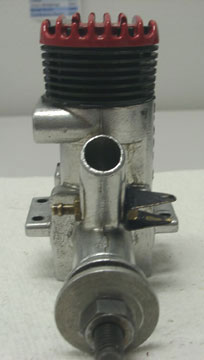
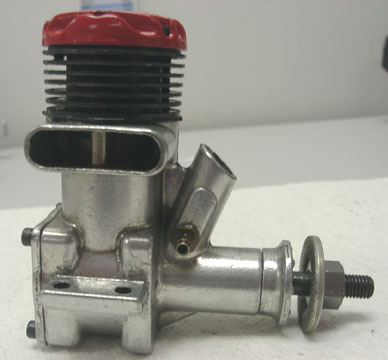
The McCoy .35. Ken Burdick photos.
Yes Folks, it's true.
Once upon a time when we all had our pretty feathers, I owned a McCoy .35.
The engine cost $5.95 or something like that and it came with a pretty gold glow plug. It was painted red on the cylinder head and had a black oxide steel finned liner with a bright cad plated aluminum case. It was good looking to say the least. As was the way of things then, it wore out immediately and pounded out the con rod which caused me to blow glow plugs and wonder why. I never looked back while new and improved engines came my way, the McCoy was likely tossed or given away.
 Greg Davis, master modeler and commensurate machinist, began to turn his focus from airplanes to why on earth he had to put up with his combat engines (Fox.36 Mk 3-5) continually breaking the crankshaft. Greg (right) has never been a stranger to engines, but in endeavoring to make crankshafts, which he did and supplied them to the Dreaded Canadian Contingent Combat team, a real force to be reckoned with. What happened during this period of study was typical of Greg and his perfection.
Greg Davis, master modeler and commensurate machinist, began to turn his focus from airplanes to why on earth he had to put up with his combat engines (Fox.36 Mk 3-5) continually breaking the crankshaft. Greg (right) has never been a stranger to engines, but in endeavoring to make crankshafts, which he did and supplied them to the Dreaded Canadian Contingent Combat team, a real force to be reckoned with. What happened during this period of study was typical of Greg and his perfection.
He discovered that he, like many of us, didn't totally understand the dynamics of our engines, and most information was handed down and not fully understood. If you know Greg, you also know that this is unacceptable. He began to study in earnest. One of the many things learned was that he could understand all relationships in timing, metallurgy and tolerances for the various parts. Greg also learned that he could not only make parts, but beyond this, figured ways to refurbish parts that could not otherwise be used.
Asking why Greg does what he does is hopeless, it just happens and when it does it's amazing in its detail and simplicity. I have no idea what possessed him to refurbish the McCoy .35, but we're all the better for it.
I lost touch with this two-cycle wonder while he was off flying free Flight for several years. I had only heard about the great things he had done with the McCoy and always wanted one. Recently I was given one from Greg as a gift, with parts donated by Mike McCarthy. I was speechless.
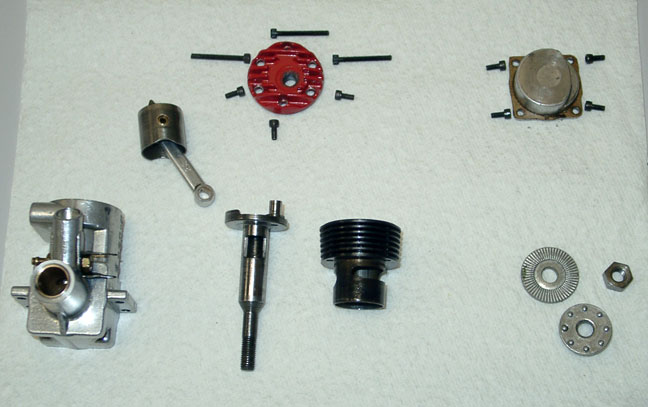
Some of the features that have been put into making this engine precision are:
Here, in Greg's own words, is how the entire project was conceived and executed.
The idea started back in the eighties when the CL club up here in Vancouver started flying "Nova Clone" we needed a common engine that was not high performance and one that everyone had. The venerable 5-dollar McCoy. We all had one or two but they were all worn out, so I set about to try to fix that. I had the precision equipment. I just needed to figure out the materials, and luckily enough the first try was successful, so I did about 10 engines for the guys in the club, and we all started out on a pretty level playing field. Each engine takes about 3 hours to build and they run in, in about 15 minutes. After that they just keep getting faster, no one that I know of has been able to wear on out or damage it from lean runs. All the engines went the full 2 flying seasons with no failures. A few years ago when Ed Southwick was alive I did some .40s for him. He had a few really lean runs with no damage. It doesn't hurt them to disassemble either.
The piston, with the high grade iron sleeve on it is ground with 8 tenths of a thousand taper (bigger at the top). The cylinder is tapered 5 ten thousands from the exhaust port up . (Smaller at the top). --- Greg
The engine as you can see looks practically new, will last a lifetime and is very nostalgic. Now all I have to do is build a proper “period” airplane for it. If you're looking for a perfect Old-Time Stunt engine with some flair, this might be the one. Although Greg is not really producing this fine rework anymore, he might be talked into making a few if you supply him with the parts.
-- Kenny-b
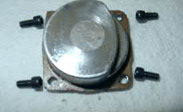
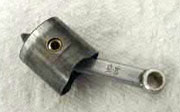
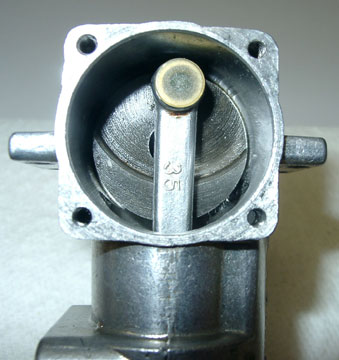
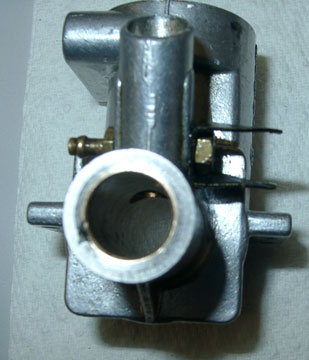
This page was upated May 11, 2011